[Apple II, Avalon Hill]
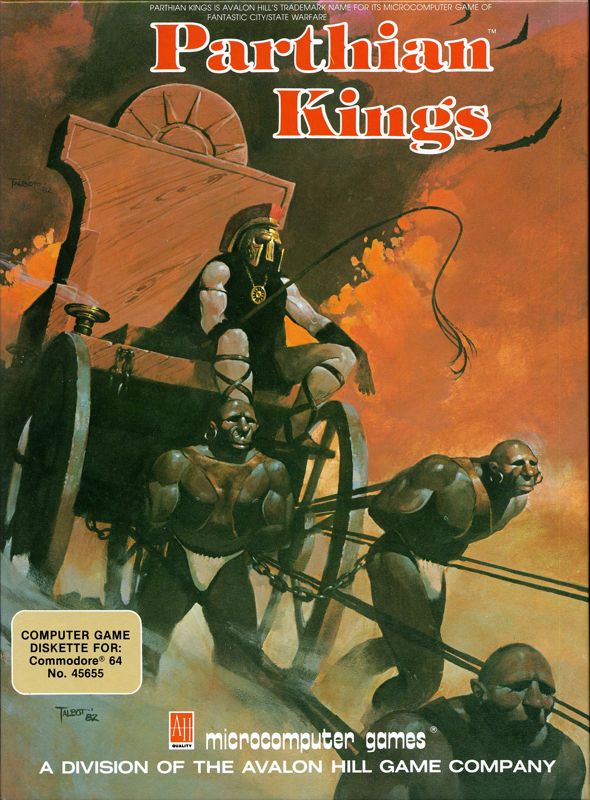
– Hazarapatish Narwhal ! King Arsaces of Parthia is dead. The satraps are fighting for supremacy ! We need you to reunite the Empire !
– Sir Yes Sir ! I am happy to once again change history for the better.
– We will send you to the year 1250 ! Be wary of King Alfred, he might be the smartest of your rivals!
– 1250 ? King Alfred ? But…
– Don’t neglect King Louie either ! His Orc Lords pack quite a punch !
– Are you sure we are being historical there ?
– Who knows ? It is 1983, we don’t have Wikipedia yet !
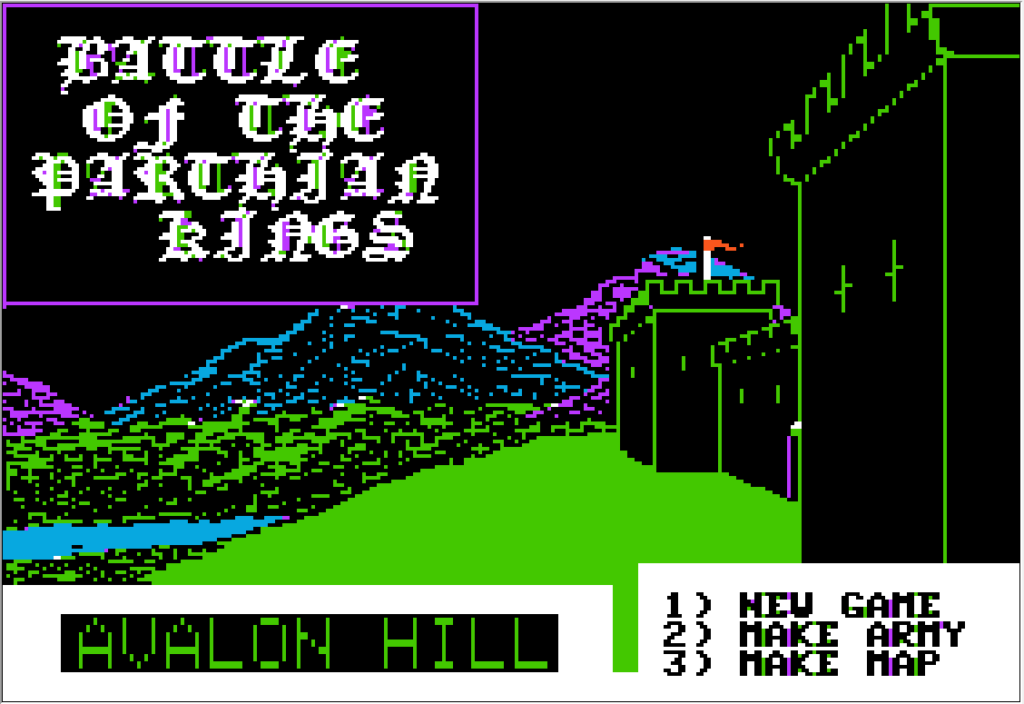
Parthian Kings is the last wargame released by Avalon Hill in 1983 and stood as their most ambitious project at the time. So ambitious, in fact, that it was the first Avalon Hill wargame requiring two disks : one for the game itself, and another for data storage – custom armies and maps. Indeed, the first thing players must do in Parthian Kings is to “create” an army by specifically defining the stats of five combat units.
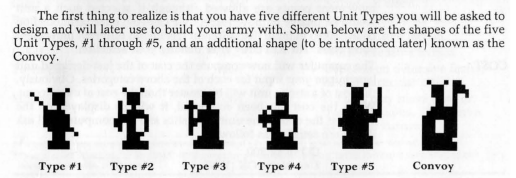
The stats are pretty straightforward :
- Hit points – 10 to 99,
- Strength – The damage dealt to the opponent when attacking – 5 to 2/3 of the hit points,
- Range – The maximum is 2. A unit can only engage in melee combat if its range is 0. Ranged attacks inflict merely 20% of the strength in damage, so even ranged units perform better in melee combat,
- Armour – which is decreased from the enemy’s strength when under attack. The maximum is 3 so I am not sure it has much of an impact, except maybe against ranged attacks,
- Movement – 0 (static) to 3,
- Cost – The game determines this based on the choices I made above.
I have always been a Ponticaboo, so I give my army a Pontic vibe :

- The militia will serve as a garrison unit, cheap, slow, but well-armoured,
- The chalkaspide (bronze-shield) will be my first rank-and-file field unit, with again a good armour value so it counters ranged units. I plan to move it from defensive terrain to defensive terrain.
- The companion will be another rank-and-file unit. It will punch harder than the chalkaspide, but will lack armour,
- The balisters (better names did not fit the 9 characters limits) will be a slow ranged unit.
- Finally, my end game unit will be the cataphract, boasting high hp, powerful attacks and fast movement, I don’t give it any armour : if it encounters a weak unit it will crush it and if it encounters its equal, armour will be irrelevant.
With my units designed, I can launch the game. Players are also supposed to create their own map, but the game shipped with a default one named Parthia so that’s the one I will be using.
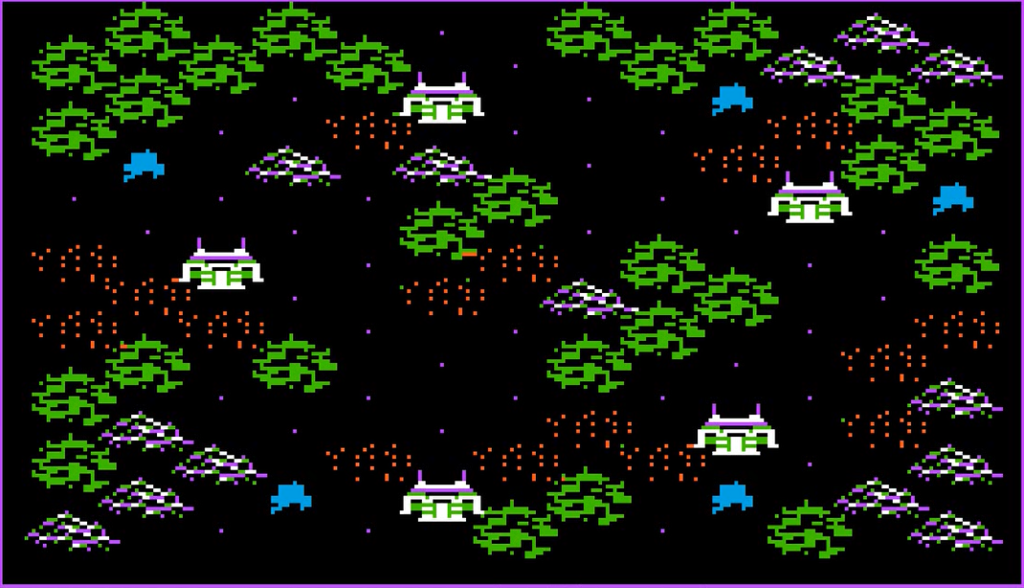
For this AAR, I compete with three computer-controlled rivals in a long game (no time limit) and with magic permitted. I stay thematic with my wizard’s name:

Being the third player, I choose my main city third. With the North and North-Eastern cities occupied, I opt for the Southern city. This ensures at least one neighbouring city starts vacant and ready for occupation.
The game starts for real, and I get to know my rivals :
- In the North, playing first, King Alfred, his wizard Vashiti and his English-themed army (Esquire, Riders, …),
- In the North-East, playing second, King Louie IV, his wizard d’Angele, and his fantasy-themed army (gnomes, lizardmen, orc lords, orc riders…)
- In the South-East, King Genghis, his wizard Osapa, and his generic army (Scout, Ranksters, Nightmen, “Captians” [Captains?], …)
Given how I tried to remain thematic after the box and the manual stressed that I was fighting for the Kingdom of Parthia, I feel like a miniature hobbyist at a convention who finds a match and deploys his units painted in minute details, only to hear their opponent say, as they grab their own figurines from a box “You play a Swedish Carolean army ? Nice ! As for me, I play SPACE MARINES !”
Anyway, back to the game. Every turn starts with a census and a tax report :

The economy is straightforward: birth and death rates depend on the population, immigration and emigration on the tax rate. For now, the starting 10% is acceptable.
Next, it is time to buy my units. I begin with a King (myself, KI), a Wizard (WI) and two convoy masters (CM). I won’t delve into caravans at this point. I purchase 9 militiamen (MI), 6 chalkaspide (CH), and 4 companions (CO).

The Wizard phase follows: my wizard can attempt to cast one spell per turn, with a maximum range of 2 from his location (my city). Initially, only 2 spells are available, and my wizard doesn’t always succeed. As he gains experience, more spells will become available, and the earlier spells will also become easier to cast.
The two starting spells are :
- Materra, which improves terrain (forest to rough, rough to clear – lakes and mountains are immune),
- Nosterra, which does the opposite.
I don’t particularly need this at the moment, but I want my magician to gain some experience so I terrafom the hexagon North-East of my city. My rivals did the same, and we’ll all repeat this process in the following turn.
Finally, I can deploy my units around my castle (a unit can hold a maximum of 9 “divisions”, all of the same type, because as we all know the Parthians used a divisional organizational structure) and plan their movements :
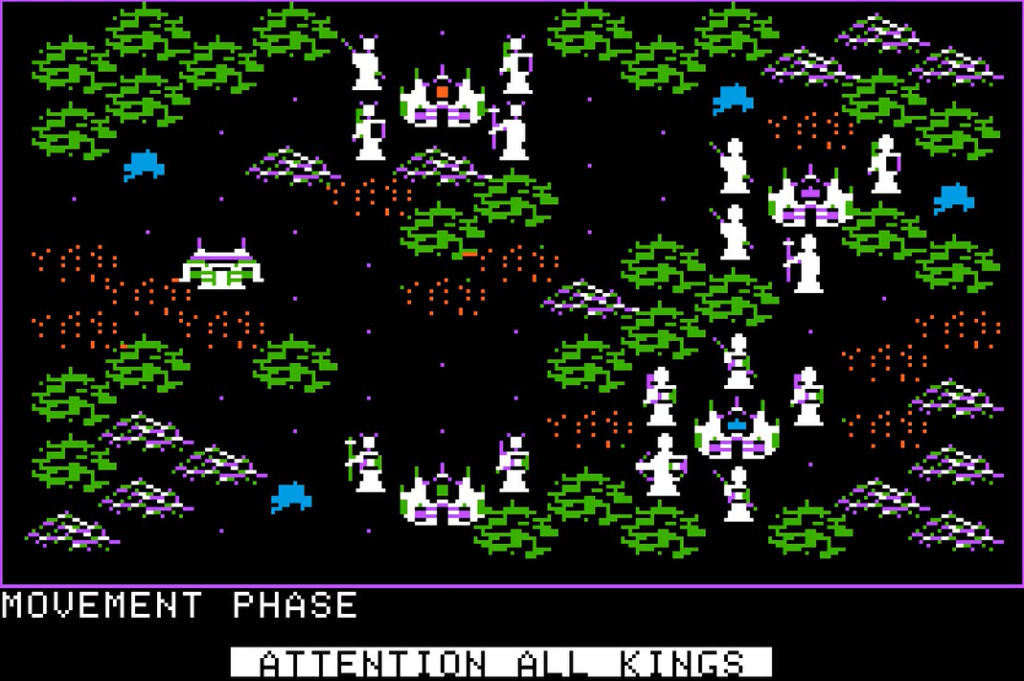
Here, significant UI issues became apparent :
- it is difficult to understand which units belong to which player. There’s a way to determine this from the shield and the shape of the helmet, but I only discovered this by the end of my session, and it’s genuinely hard to understand at a glance.
- There’s no way to learn the stats of enemy units, even when engaging them in combat. For all I know, the seemingly puny pikemen could be King Alfred’s most potent unit, and the shield-bearers might actually be his ranged units.
- Nor is there a way to tell whether an enemy icon represents 1 division or 9 divisions. I hated this in Conflict back in 1979-1980, and I loathe it here even more. It is worse in this game because at least in Conflict you knew that all units started at max health, so you could more or less keep track.
For the sake of the AAR, I have edited subsequent screenshots and added color to the units for greater clarity, though this only solves the first problem.
In games featuring multiple factions and high starting resources, I employ a tried-and-true strategy: seize the freebies and let the others engage in battle. My plan is to dispatch some companions to claim the vacant city in the West while maintaining a defensive line near my castle with some Bronze Shields :
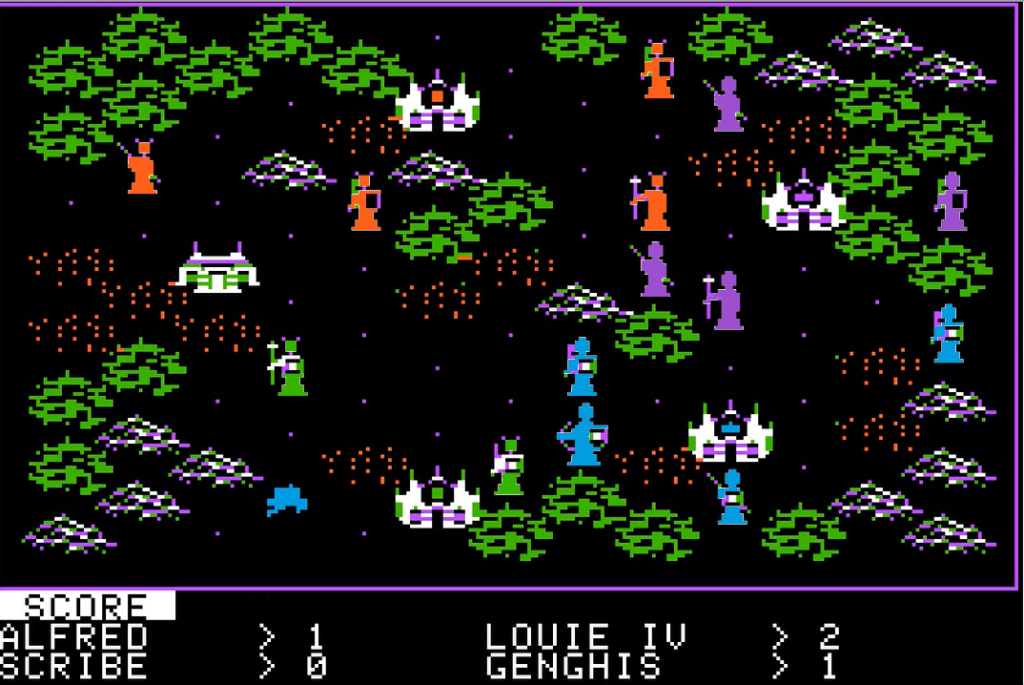
My Northern rival, King Alfred in Orange, harbours similar ambitions for the empty city in the West. King Genghis in blue is advancing towards me :
Movement and non-ranged attacks are executed by programming the movements of all players, and then all units move one after the other automatically, spending movement points in turn (all units use their first movement point, then their potential second, and then their potential third).
The following turn, since King Alfred’s units move first, the Western city falls into his hands. I err by not also attempting to assault the city the same turn, it would prompt a battle where his forces would benefit from the city’s defensive bonus, but at least I would not have to also fight any reinforcement directly recruited in the city next turn. In the South, I advance my chalkaspides to eliminate Genghis’s ranged unit near my city :
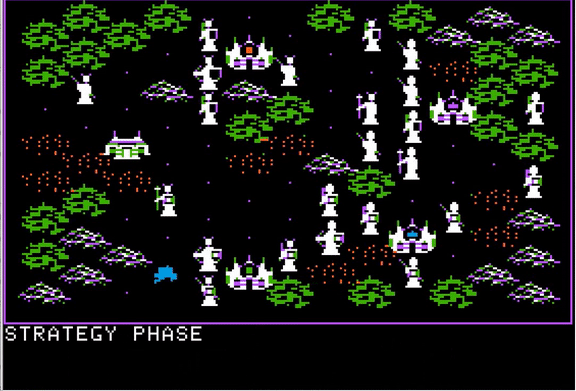
As new units are deployed every turn, the game quickly reaches a certain level of complexity :
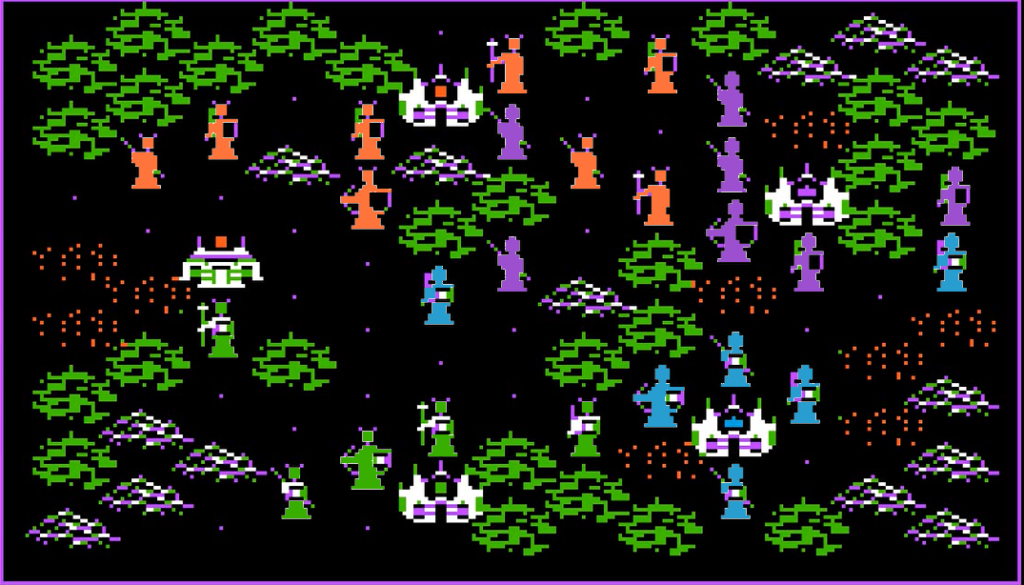
I attack the Western city, but too late. King Alfred has bought a strong garrison during his turn. Combats for cities are always to the death, and my companions are destroyed.

Having failed my opening, I focus on defence. I hope my opponents will exhaust one another while I build a force strong enough to seize at least one city. Luckily, King Alfred turns his attention to King Louie, King Louie targets King Gengis, and King Gengis focuses on his defences, leaving me relatively alone.
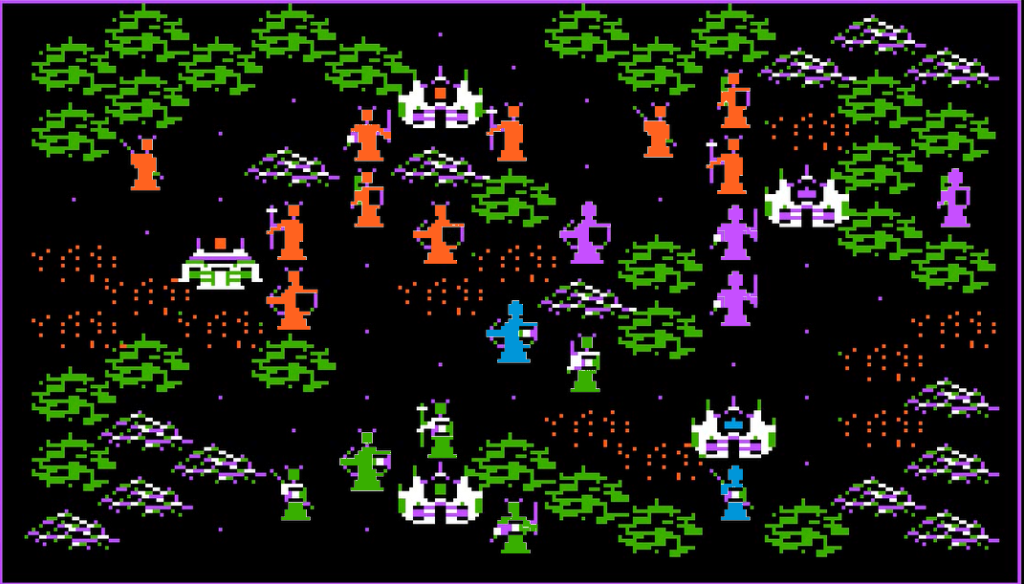
In the meantime, my wizard has gained experience and learned two new spells:
- KAWELE – this spell considerably boosts the population and income generated by a friendly city in a given turn, or inversely affects an enemy city (though none are within range at the moment).
- OSGARDE – this spell aids a friendly city in its defences or weakens the defences of an enemy city.
I use KAWELE, and it is VERY EFFECTIVE. Each turn I successfully cast this spell adds between 50 and 100 inhabitants (tripling my natural growth rate) and approximately 50K gold (initially one-third of my tax revenue for now, much less in later turns).
I use the influx in cash to build my endgame units – cataphracts – to mount an attack against King Gengis, already under pressure from King Louie. Alas, at the last moment, King Alfred attacks me, so I need to use half of my cataphracts as a garrison, and my attack with the rest of them peters out. The result is a global stalemate.
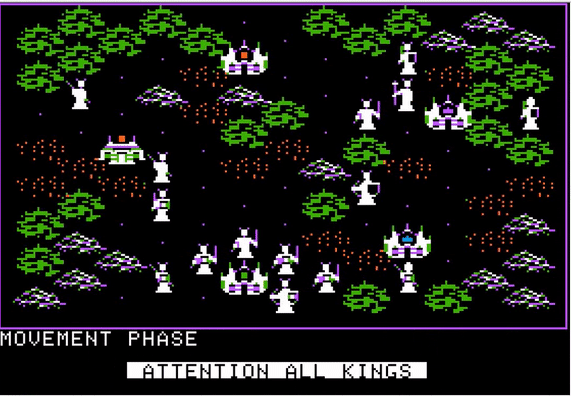
This scenario plays out once again. As I’m gearing up for an offensive, King Alfred unexpectedly appears at the eleventh hour with an army, forcing me to split my forces at the last minute. However, there are two key differences this time.
- First, King Alfred’s relentless pressure on King Louie forces the latter to go full defence, allowing King Gengis to finally roll out his units… and snatch King Louie’s castle :
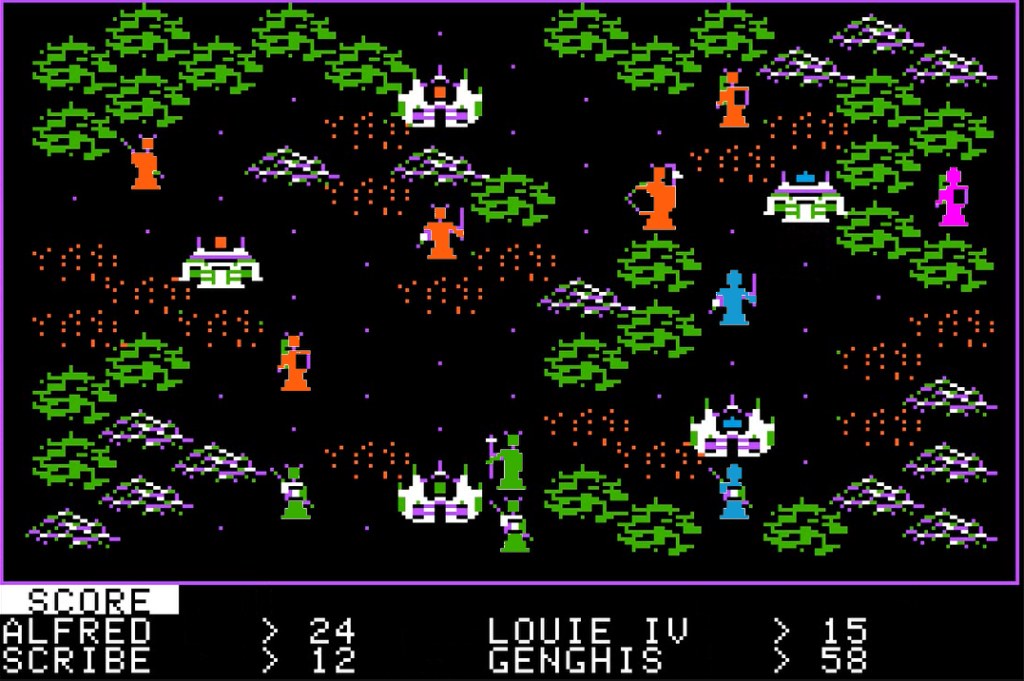
- The second difference is that while the other players have moved to higher-level wizard spells (TENEMOUS, which increases or decreases the number of divisions in a unit for allies or enemies respectively, and TEFORMUS, which changes the unit type of any target), I keep using KAWELE, save for a couple of experimental casts, skyrocketing my economy. I also increase my tax rate to 20%, with the emigration largely offset by the KAWELE bonus. This enables me to produce 8 divisions of cataphracts every turn.

On turn 18, just as King Alfred seizes the North-Eastern city, I have King Gengis surrounded by over 40 divisions of cataphracts. It will take all of them to actually capture the city :
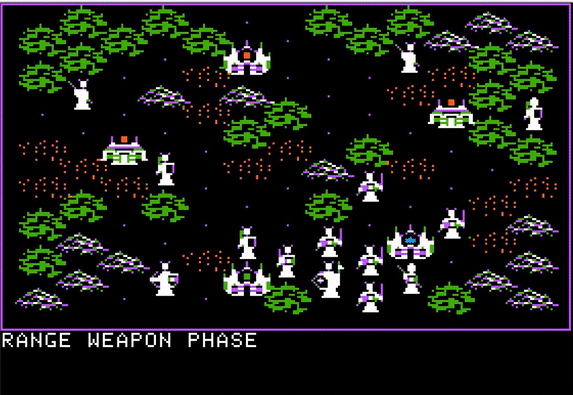
It’s just King Alfred and me now ! My wizard, sitting in the convoy between the two cities, casts KAWELE on my newly acquired real estate, boosting its population from a solid 500 to a great 750 in just 3 turns. As my population skyrockets, tax revenue follows suit and can be freely distributed to any of my cities. It soon becomes clear that I either match or slightly outproduce King Alfred :
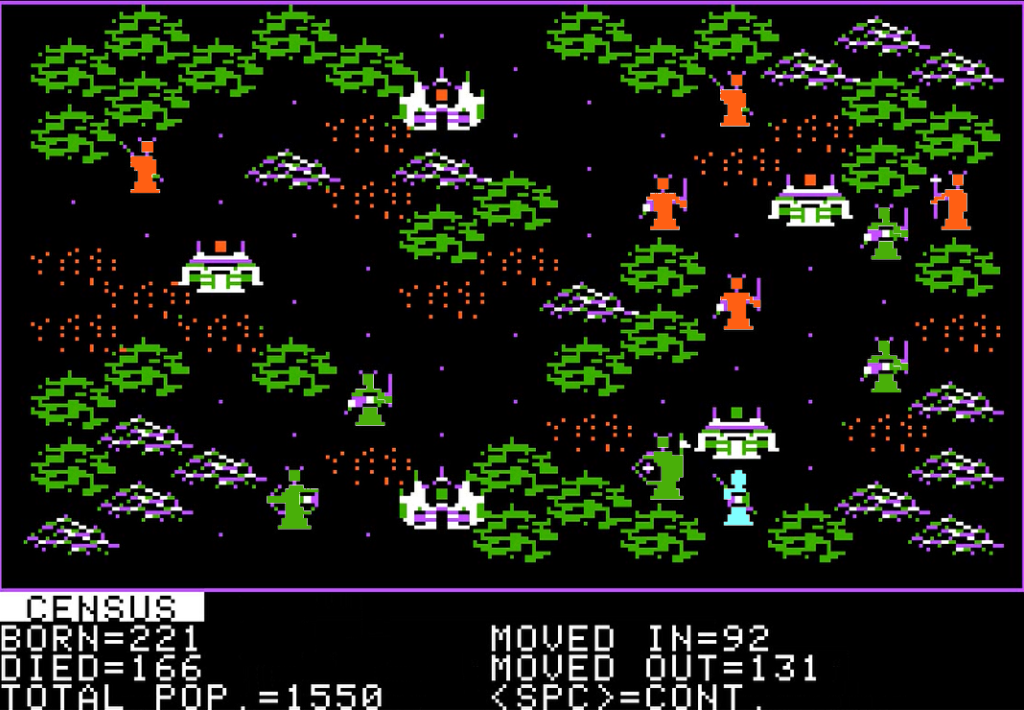
King Alfred centers his attention on the former city of King Genghis. I let him approach, taking potshots at his armies and engaging in easy defensive battles. Meanwhile, I amass troops and launch an attack along the eastern border of the map. By turn 29, I have captured the North-Eastern city, promptly recruiting and deploying units around it :

The North-Eastern city was not very developed (with only 300 inhabitants), but this is also -300 for King Alfred. I have an overwhelming advantage and easily overrun what remains of his kingdom by turn 31.
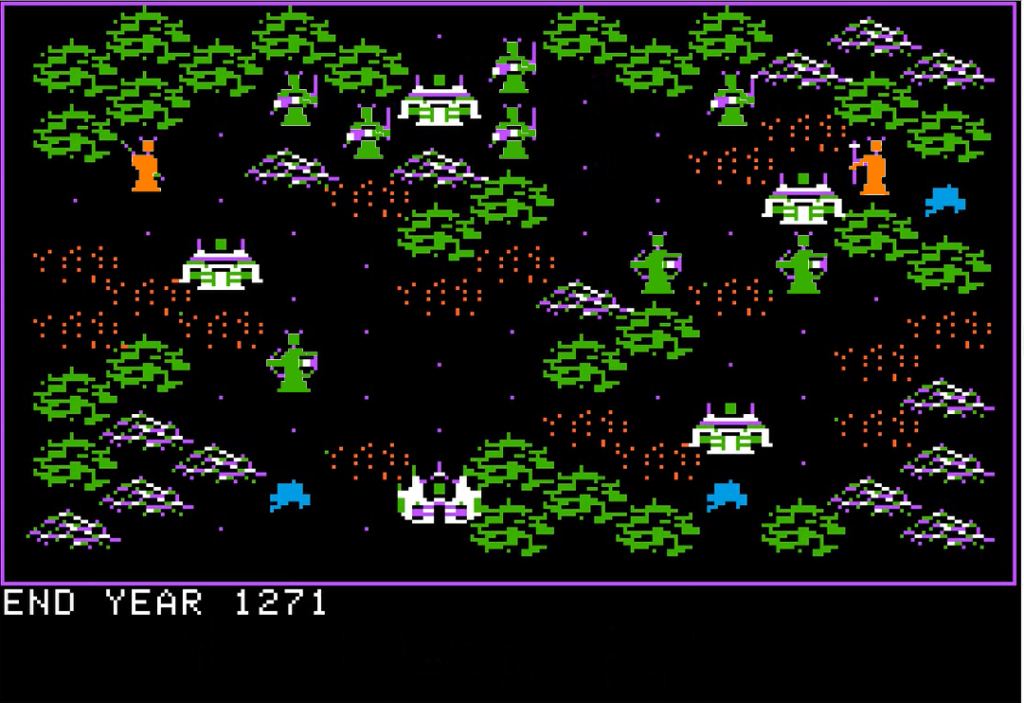
One turn later, my victory is official :

This victory comes on my first serious attempt (=more than 2 turns) at playing Parthian Kings ; it took me two hours with no reload. However, I am left unsatisfied ; I feel I have exploited a poorly balanced magic system. I want to give the game another chance under optimal settings: a one-on-one duel against King Alfred, on a custom map, with a limited number of turns and no magic this time.
As I mentioned at the outset, the game comes with a map builder. If you’d like to propose a map—either as a general description or, if you are into retrogaming, by actually launching the game on either Apple II or Commodore 64, using the editor and sharing your creation—please do. Otherwise, I wil endeavour to create an interesting map for this duel. You have some time, I made sure to have a really interesting game #100 for my next article.